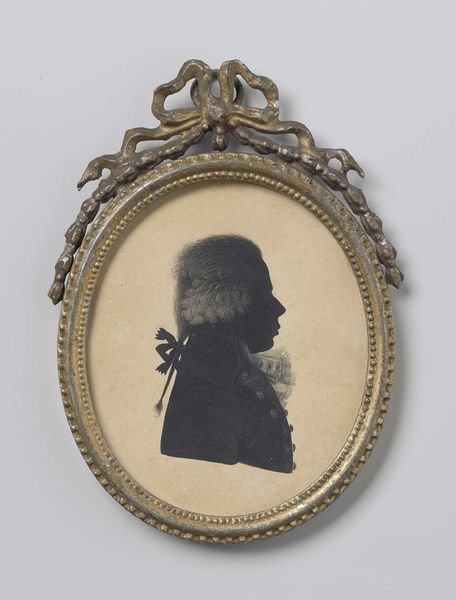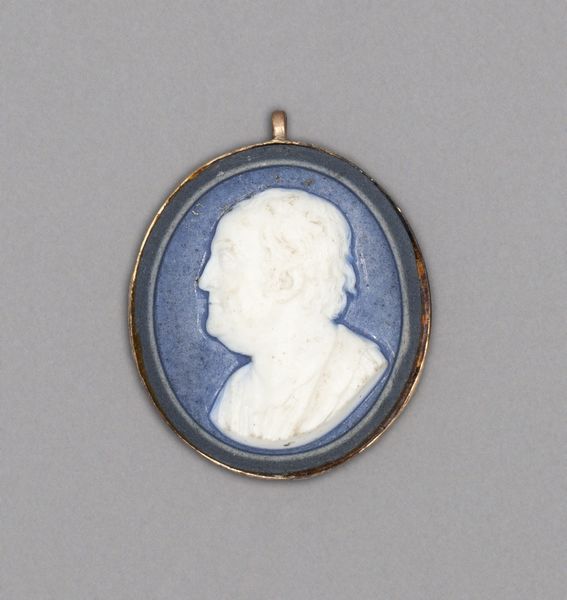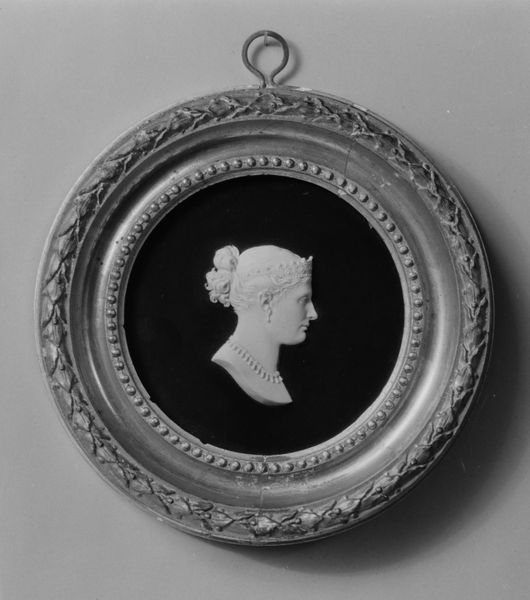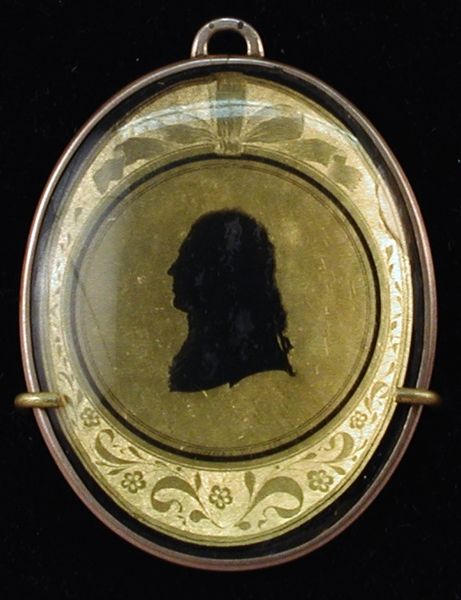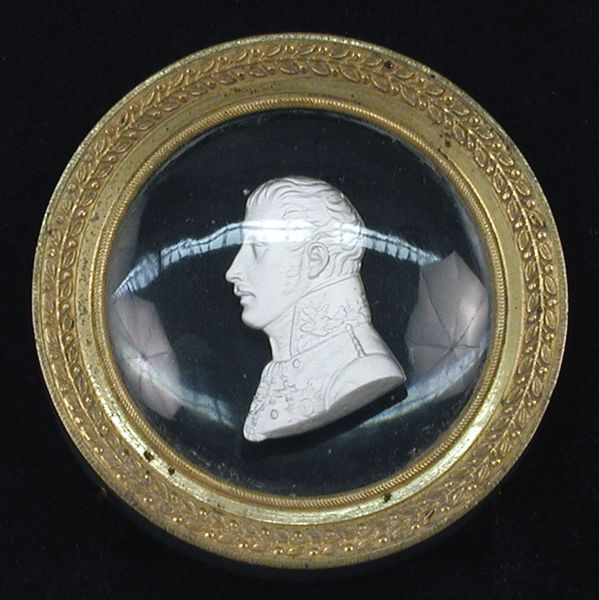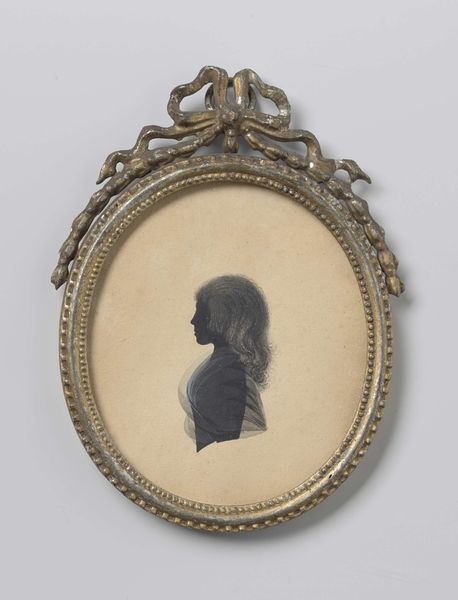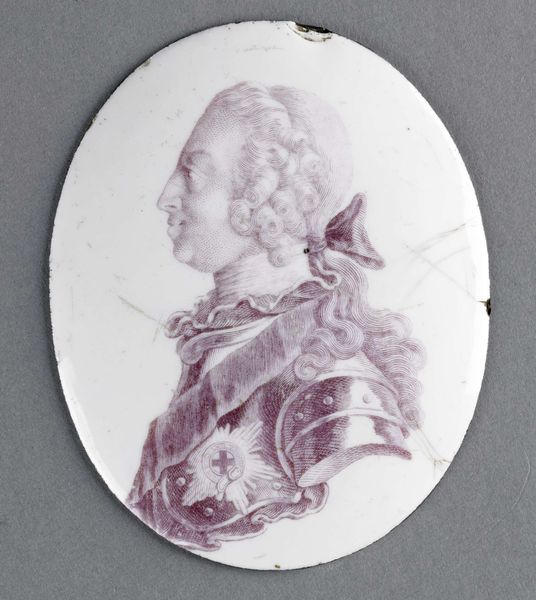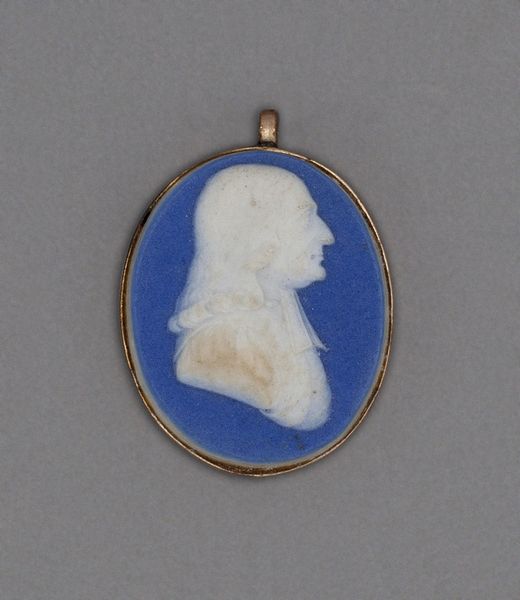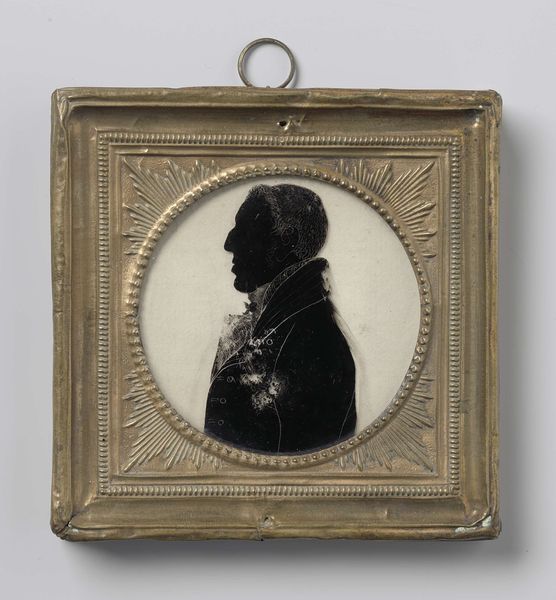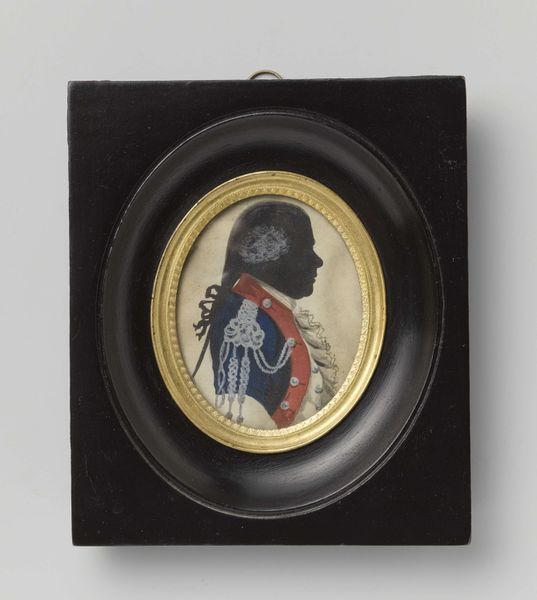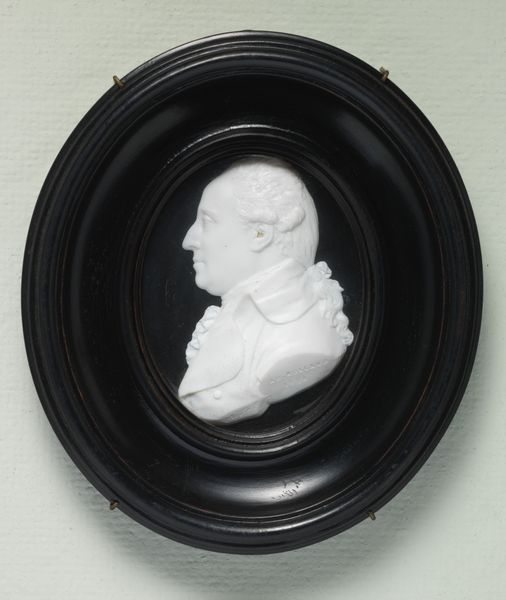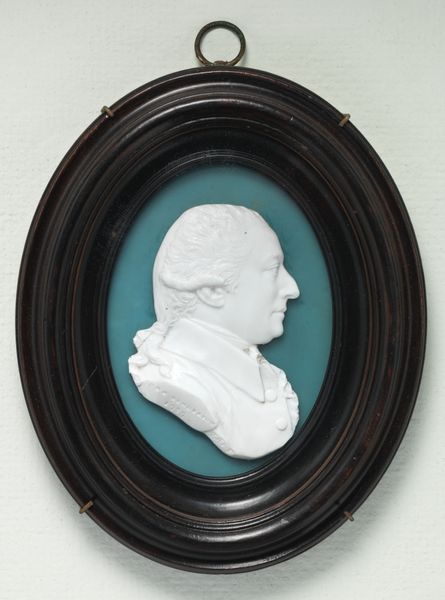
drawing
#
portrait
#
drawing
#
neoclacissism
#
sculpture
#
miniature
Dimensions: height 7.7 cm, width 6.0 cm, depth 0.5 cm, weight 22.0 cm
Copyright: Rijks Museum: Open Domain
Editor: Here we have an elegant silhouette drawing from around 1780, “Willem V (1748-1806), prins van Oranje-Nassau,” created by an anonymous artist. The figure is striking in its graphic simplicity. The elaborate framing really emphasizes the curvature of the Prince's face. What are your thoughts about the forms at play? Curator: The most immediate formal quality is, of course, the sharp contrast between the black silhouette and the white background, creating a powerful graphic effect. Note how the artist utilizes the outer frame – a contrasting color – to isolate and amplify the central figure. Semiotically, this reinforces the sitter's status, placing him within a contained, defined space of power. Observe the use of line – not just in defining the Prince, but in the repetitive, almost rhythmic, beaded pattern of the inner frame. Editor: So the frame itself is an integral part of the artwork's message? Curator: Precisely. It functions as both decoration and structure, enhancing the Prince's image while also creating a sense of visual order, reflective of the Neoclassical period in which it was created. Consider how the artist masterfully suggests volume and texture using only a single, unbroken plane of black. Look at the slight gradations around the Prince's attire and hair; it pushes against flatness and into sculptural space. How might that semiotic relationship underscore royal authority? Editor: I see what you mean! The play of light and shadow suggests dimension, solidity… qualities you'd associate with a powerful leader. This tight composition really allows the negative space to define form. I initially looked past the decorative frame as embellishment alone. I've learned the silhouette and its presentation creates a clear articulation of class. Curator: Indeed. And consider also the medium itself – drawing. Its accessibility made portraiture available outside traditional painted commissions, signifying changing societal dynamics even as it reinforced existing hierarchies.
Comments
No comments
Be the first to comment and join the conversation on the ultimate creative platform.
